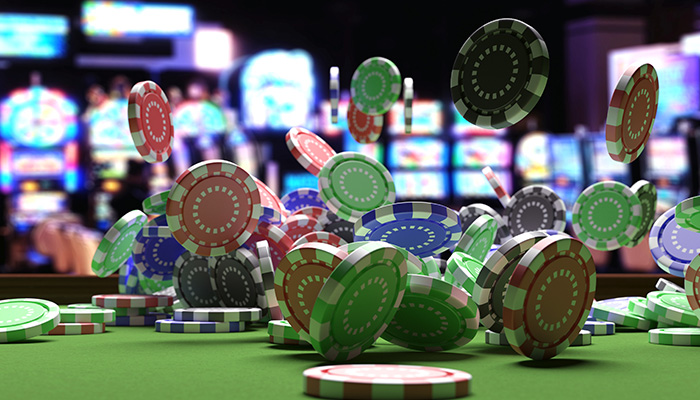Gambling slots machines have captivated players for decades, drawing them into a world of blinking lights, tempting sounds, and the thrill of luck. These devices, often found in vibrant casinos, combine elements of chance and strategy, making them an exciting option for newcomers and seasoned gamblers alike. But what is it that makes these games so attractive? The answer lies in the intricate psychology at play as players engage with these colorful reels.

Regardless of whether it’s the wave of anticipation while waiting for the outcome of a spin or the thrilling feeling of a large win, the emotional response elicited by casino slots is significant. The design of these machines is carefully designed to stimulate the brain’s reward system, creating an event that can be both exciting and addictive. Understanding the psychological factors at play in playing casino slots machines can provide understanding into why so many individuals are drawn to them and how they affect actions and decision-making in the gambling environment. Ga179
Grasping the Attraction of Slot Machines
Slot machines have a distinct capability to enthrall players with their colorful graphics and alluring sounds. The dazzling lights and enthralling themes create an welcoming atmosphere that draws people in. Each rotation of the reels offers the potential of a significant win, fueling a sense of eagerness and expectation that keeps players coming back for more. This sensuous experience plays a vital role in the appeal to casino slots games, as it engages not only the brain but also the feelings.
A significant factor contributing to the allure of slot machines is the idea of prompt gratification. Differing from other casino games that necessitate skill or strategy, slots offer quick results with each spin. The quick pace of the game allows for swift engagement, permitting players to experience the excitement of winning or the letdown of losing in a matter of seconds. This instantaneous feedback loop can lead to a profoundly compulsive experience, as players seek the next possible payout while being fascinated by the game’s constant opportunity for excitement.
Additionally, the mindset of jackpot potential cannot be ignored. The allure of hitting a life-changing payout keeps players coming back, usually outbalancing the odds against winning. Many players find themselves hoping about the possibility of striking it rich, fueled by stories of others who have won big. This sense of anticipation, together with the excitement of the game, creates an unavoidable lure that shapes the world of casino slots and makes them a popular among gamblers.
The Role of Reinforcement in Gambling
The role of reinforcement plays a vital role in the psychology of interacting with casino slots games. When players participate with these machines, they face various forms of reinforcement that can shape their behavior. Positive rewards is particularly powerful; obtaining a win, or even the possibility of winning, can create a high that keeps players returning for more. The instant response from the reels rotating, coupled with audio cues and visual stimuli, further enhances this rewarding experience, reinforcing the desire to continue playing.
The randomness of winning in casino slots games also ties into the concept of intermittent reinforcement. This psychological phenomenon happens when payouts are given out at irregular intervals, making the expectation of a potential win more exciting. Players may go for long periods without significant wins but are drawn back by recollections of past jackpots or the chance of future ones. This variability heightens excitement and keeps players hoping for that next big payout, entrenching them deeper into the betting cycle.
Ultimately, the communal element of playing casino slots games can amplify reinforcement. Many players enjoy the shared environment of a casino, where they might see others winning, share successes, or even commiserate over losses. This social reinforcement can create a shared experience that encourages ongoing engagement. Players might feel motivated to continue not only for individual benefits but also to experience the camaraderie that comes with gambling, reinforcing their overall attachment to the game.
The Impact of Casino Game Design on Player Behavior
Design of slot machines plays a crucial role in influencing how players act and improving the overall gameplay experience. Features such as graphics, audio, and themes are deliberately crafted to engage players and keep them engaged. Bright colors and inviting animations create a aesthetically stimulating atmosphere that can lead to prolonged play times. Additionally, themes ranging from historical eras to popular culture appeal to different interests, making the games appealing to a wide audience. This focused design promotes players to invest more time and finances into the gameplay.
Another important aspect of slot design is the use of incentive structures and features like extra rounds or free spins. These mechanics are designed to produce a feeling of thrill and anticipation, which can induce the release of pleasure hormones in the brain. This neurological response reinforces the action of playing by associating the game with pleasurable feelings. By providing enticing rewards, casinos encourage players to continue playing, which often leads to increased betting and extended gameplay. The mental thrill of possibly hitting a big win or unlocking a bonus keeps players returning for more.
Lastly, the social elements integrated into casino slots can also influence player behavior. Many contemporary slots feature options that allow players to interact with others through rankings or collective goals. This community feature can enhance the overall experience, as players may feel a sense of community or rivalry that encourages them to engage more deeply. The mix of personal thrill and social interaction creates a lively environment that not only entertains but also encourages habitual play, further illustrating how thoughtful game design can greatly impact player behavior.
